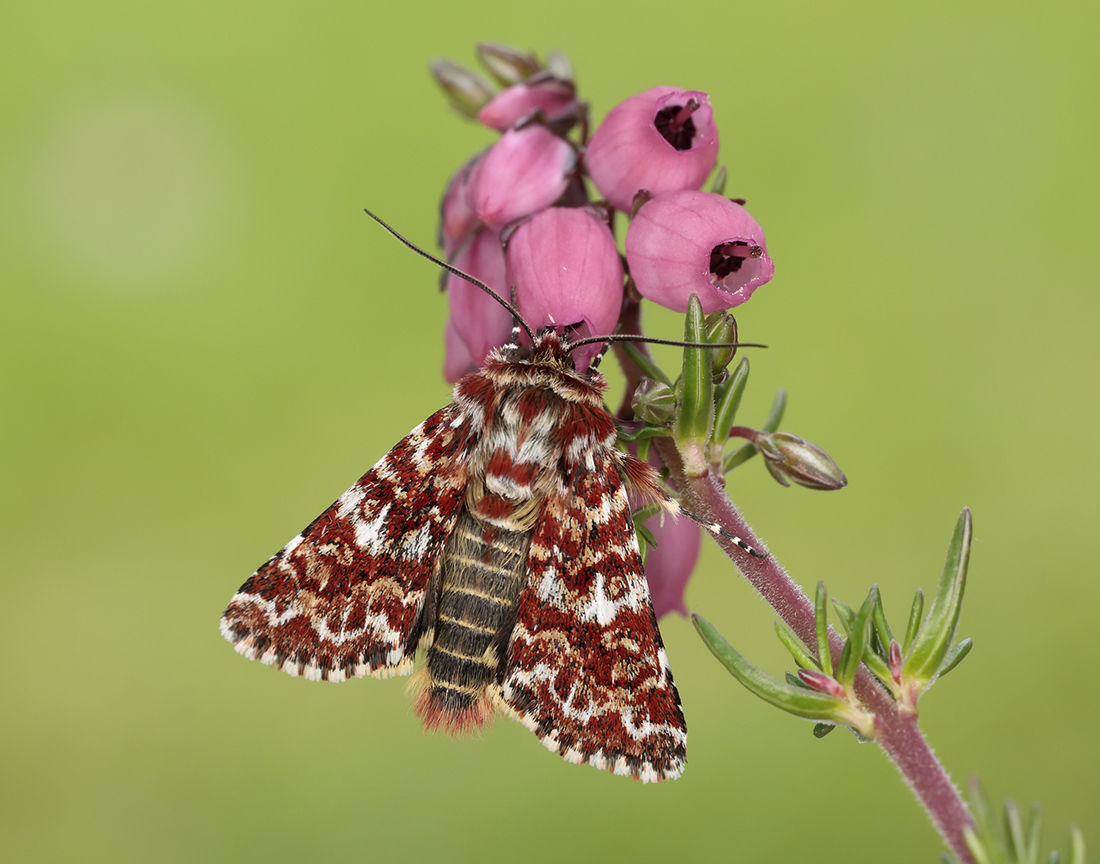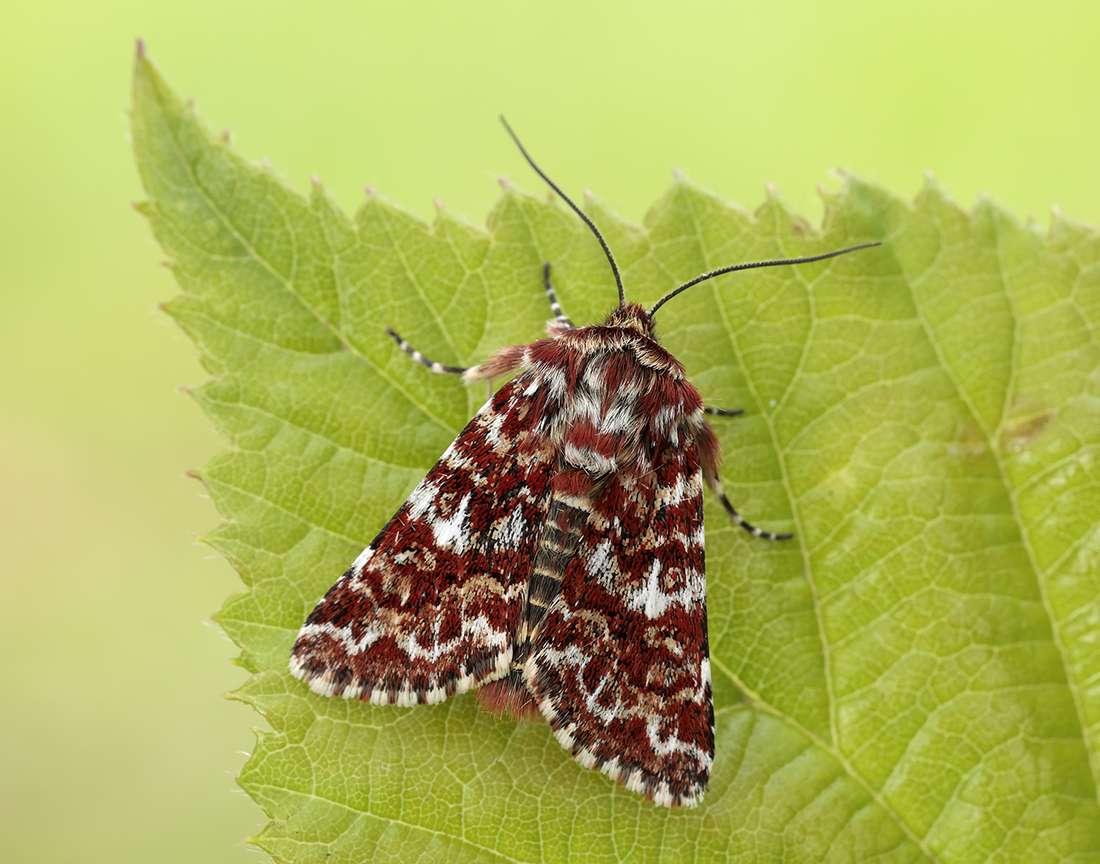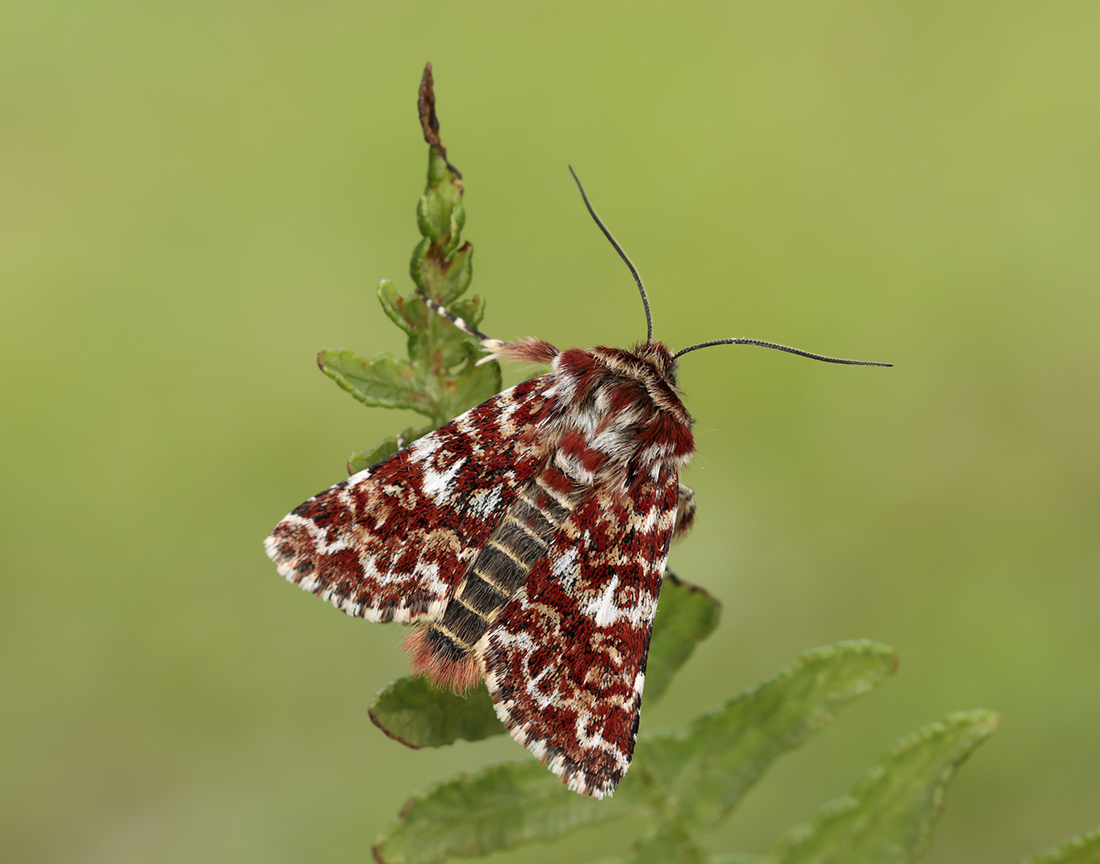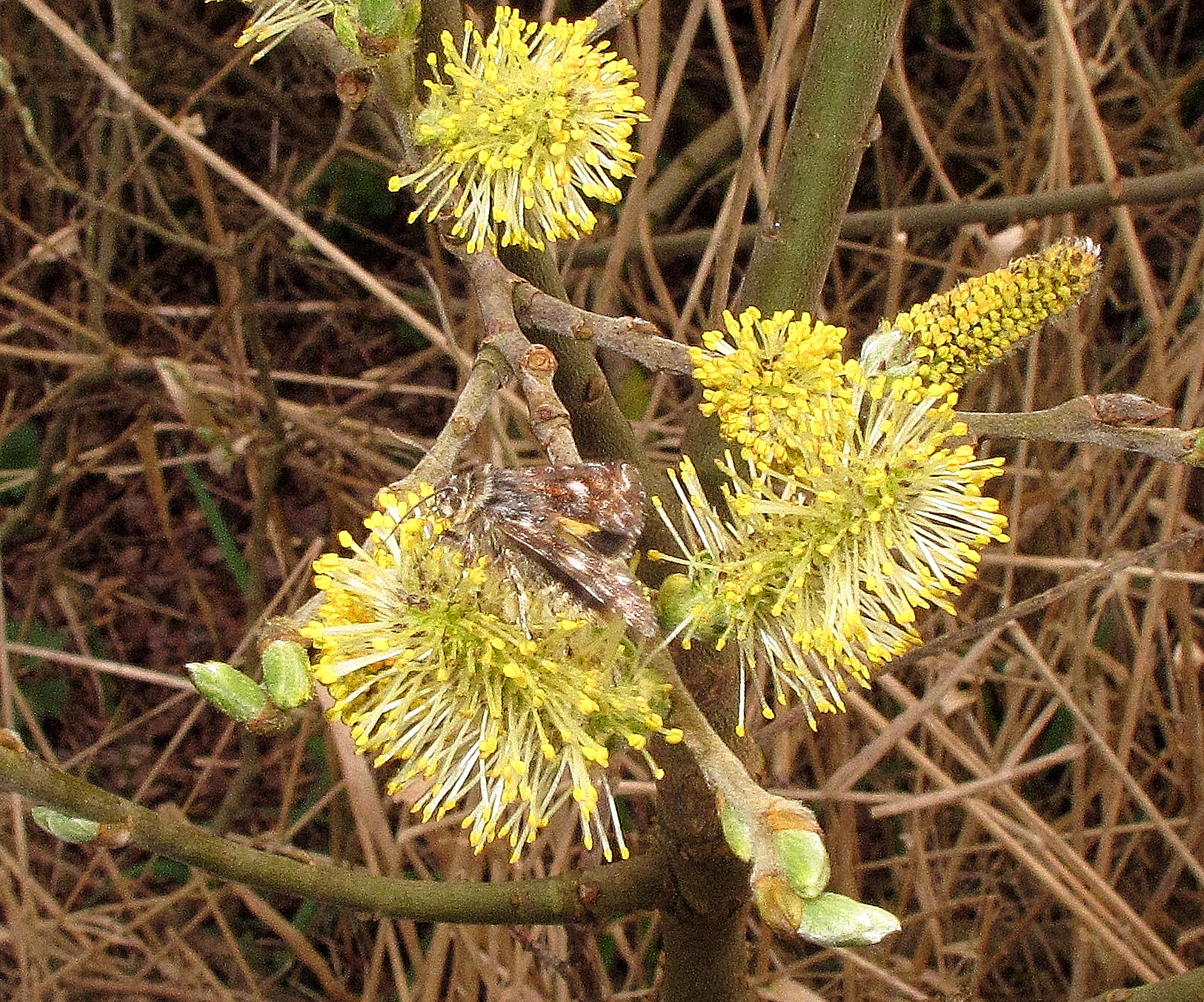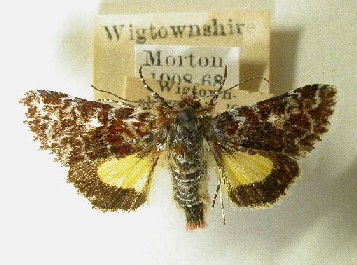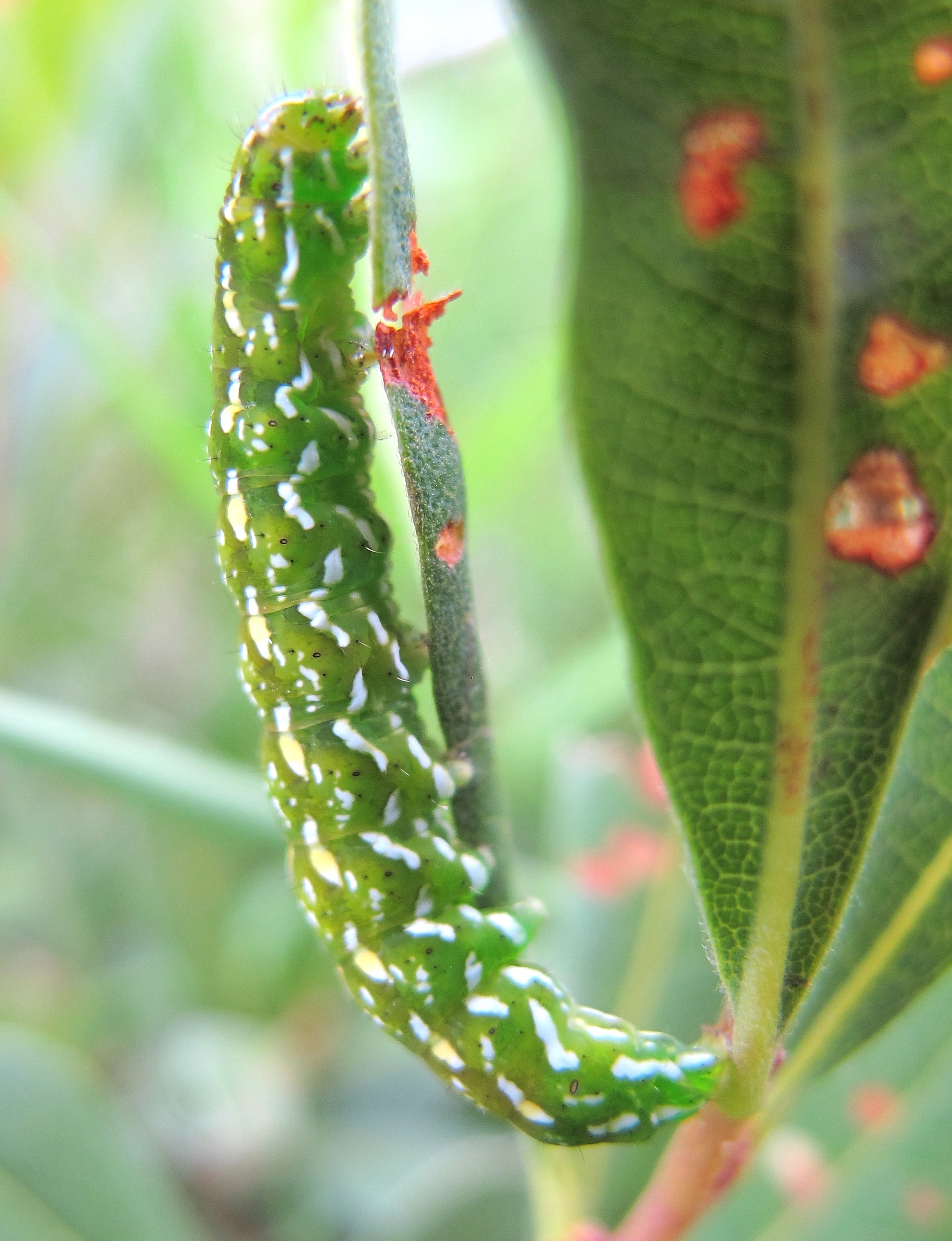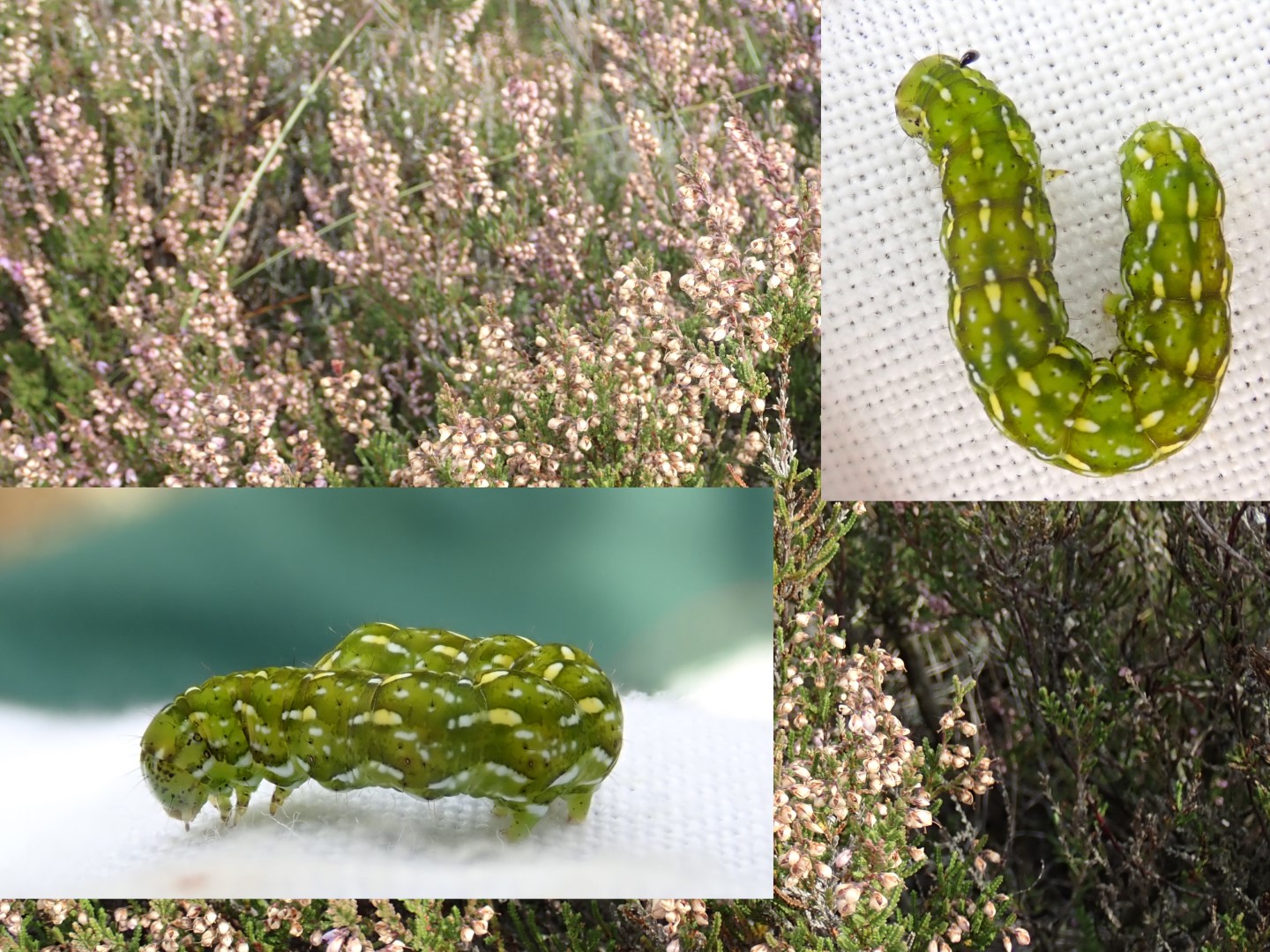Identification
The reddish brown or brownish grey forewing that is a marbled greyish white and has a conspicuous white blotch adjacent to the oval are the key features, along with the yellow underwing.
Recording Method.
Day flyer, mainly in sunshine, and feeds at flowers.
Life cycle
Probably two generations. Overwintering stage is unknown. Larvae during July to September. Pupates just below the ground in a cocoon.
Larval foodplants
Larvae feed on the terminal shoots of Heather and Bell Heather.
Habitat
Heathland and moorland.
History
Somerville (1858) found the larva on heath near Moffat in August of that year. Lennon (1860) stated he had found this species around Dumfries whilst out walking that season. By 1863, he had found it at Tinwald Downs (VC72) and Dalskairth (VC73). K. J. Morton of Edinburgh (1900) whilst on a visit in July 1899 to Wigtownshire had found this species in the Monreith area.
Gordon (1913) stated it was common on all moors around Corsemalzie, Wigtownshire, and that he had taken one at rhododendron flowers on 16th June 1899 at his home. Earliest date was 8th May 1899.
Russell (1944) listed it as occurring near Gatehouse of Fleet during 1942-43. Sir Arthur Duncan (1909-84) during his lifetime had found it at Lochar Moss and Castlehill, Dumfries (VC72).
It was 1972 before it was found again, at Stroan Loch (VC73) and surrounding area. 1987 produced the next record at Cairnsmore of Fleet. Through the 1990s, further specimens were found at the Silver Flowe (VC73), Carsegowan Moss (VC74) and Longbridge Muir SSSI (VC72).



